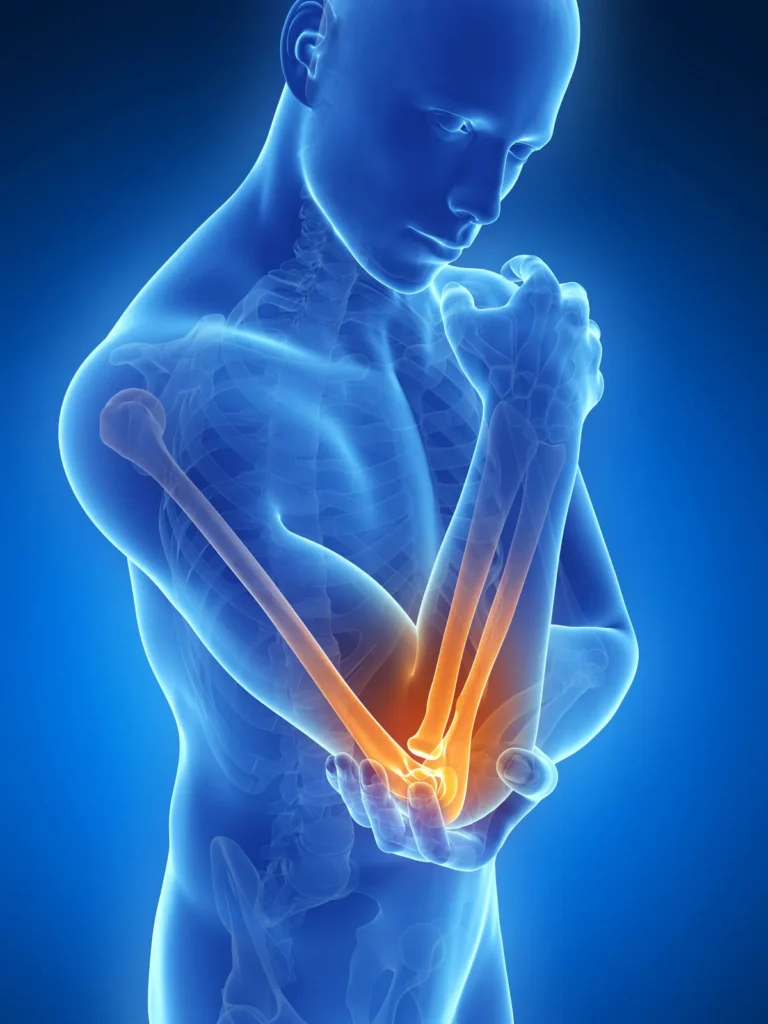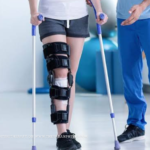Despite its name, tennis elbow affects far more office workers, craftspeople, and everyday individuals than professional athletes. Medically known as lateral epicondylitis, this condition involves inflammation and micro-tears in the tendons that attach to the lateral epicondyle of the elbow. The irony is striking: while only a small percentage of tennis players develop this condition, millions of non-athletes experience the characteristic pain and limitation that tennis elbow brings to their daily lives.
The modern workplace and lifestyle have created new pathways to this age-old condition. From computer keyboards to smartphones, from home improvement projects to repetitive workplace tasks, our contemporary world is filled with activities that can strain the delicate structures of the elbow joint. Understanding these modern causes and exploring effective treatment solutions, particularly through physiotherapy, can help individuals reclaim their comfort and functionality.
Understanding Tennis Elbow: The Basics
Tennis elbow occurs when the tendons connecting the forearm muscles to the outer part of the elbow become inflamed or develop small tears. These tendons, primarily the extensor carpi radialis brevis, are responsible for extending the wrist and fingers. When subjected to repetitive stress or sudden overuse, they can become damaged, leading to pain that radiates from the elbow down the forearm.
Modern Causes of Tennis Elbow in Non-Tennis Players
The Digital Age Epidemic:
Increasing reliance on digital devices leads to more tennis elbow cases.
Computer work:
Poorly designed workstations and extended typing cause sustained stress on forearm muscles and tendons.
Improper wrist positioning during typing forces extensor muscles into continuous shortened positions.
Mouse usage (repetitive clicking, gripping) overworks strained tendons.
Smartphone and tablet usage:
Pinching grip, repetitive thumb/finger movements for scrolling/typing irritate tendons.
“Text neck” posture alters force distribution through arms, contributing to elbow stress.
Occupational Hazards in Modern Workplaces:
Numerous occupations predispose workers to tennis elbow.
Manual/Repetitive Labor:
Construction workers, painters, carpenters: Repetitive tool use, sustained gripping, power tool vibration, awkward positions.
Healthcare Professionals:
Manual therapy, surgical procedures, patient transfers: Repetitive hand/wrist movements, forceful gripping.
Home and Recreational Activities
The rise of DIY culture and home improvement projects has introduced many weekend warriors to tennis elbow. Activities such as:
- Extensive gardening and yard work
- Home renovation projects involving repetitive hammer or screwdriver use
- Prolonged painting or wallpapering
- Heavy lifting with poor technique
- New exercise routines involving gripping (rock climbing, weightlifting)
These activities often involve individuals who are not conditioned for such repetitive stress, making them particularly susceptible to injury.
Age-Related and Lifestyle Factors
Tennis elbow most commonly affects individuals between 30 and 50 years of age, when tendons begin to lose some of their elasticity and healing capacity. Sedentary lifestyles compound this natural aging process by allowing the supporting muscles to weaken, placing greater stress on the tendons during occasional periods of activity.
How Physiotherapy Transforms Tennis Elbow Recovery

Comprehensive Assessment and Diagnosis
Physiotherapy intervention begins with a thorough assessment that goes beyond simply identifying the presence of tennis elbow. A skilled physiotherapist examines the entire kinetic chain, from the neck and shoulder down to the hand, identifying contributing factors that may have led to the condition. This holistic approach is crucial because tennis elbow rarely exists in isolation; it’s often the result of compensatory patterns or weaknesses elsewhere in the body.
The assessment includes movement analysis, strength testing, and evaluation of workplace or activity-specific positions that may be contributing to the problem. By understanding the root causes rather than just treating symptoms, physiotherapy can address the underlying issues that led to the condition and prevent recurrence.
Manual Therapy Techniques
Physiotherapists employ various hands-on techniques to address tennis elbow effectively. Soft tissue mobilization helps improve blood flow to the affected tendons, reduces muscle tension, and promotes healing. Techniques such as deep friction massage, while initially uncomfortable, can help break down scar tissue and stimulate the body’s natural healing response.
Joint mobilization techniques address any restrictions in elbow, wrist, or even neck and shoulder joints that may be contributing to altered movement patterns. When joints don’t move properly, surrounding muscles and tendons must work harder to compensate, potentially perpetuating the cycle of irritation and pain.
Progressive Exercise Programs
The cornerstone of physiotherapy treatment for tennis elbow is a carefully designed exercise program that progresses through several phases:
Phase 1: Pain Management and Initial Healing During the acute phase, exercises focus on gentle range of motion and pain-free activities that maintain mobility without aggravating the condition. Isometric exercises, where muscles contract without joint movement, can help maintain strength while allowing healing to begin.
Phase 2: Strength Building and Tissue Remodeling As pain subsides, eccentric exercises become central to the treatment program. These exercises involve lengthening the muscle while it contracts, which has been shown to promote proper collagen formation and tendon healing. The classic “Tyler Twist” exercise, involving rubber tubing or a FlexBar, is particularly effective for tennis elbow rehabilitation.
Phase 3: Functional Integration and Return to Activity The final phase focuses on exercises that mimic real-world activities and gradually reintroduce the movements that initially caused problems. This might include grip strengthening, endurance training, and sport or work-specific movement patterns.
Education and Ergonomic Modification
Perhaps one of the most valuable aspects of physiotherapy treatment is education. Physiotherapists teach patients about their condition, helping them understand what activities to modify or avoid during healing. This education extends to proper ergonomics, whether for computer workstations, tool use, or recreational activities.
Key ergonomic principles include:
- Maintaining neutral wrist positions during activities
- Taking regular breaks from repetitive tasks
- Using tools and equipment that reduce grip force requirements
- Adjusting workstation height and positioning
Implementing proper lifting and carrying techniques
Modern Physiotherapy Approaches and Technologies
Instrument-Assisted Soft Tissue Mobilization (IASTM)
Tools like Graston technique instruments or ASTYM tools allow physiotherapists to detect and treat soft tissue restrictions more effectively than hands alone. These instruments can help break down scar tissue, improve tissue mobility, and stimulate healing responses in chronic cases of tennis elbow.
Dry Needling and Trigger Point Therapy
Many physiotherapists now incorporate dry needling techniques to address muscle knots and trigger points that contribute to tennis elbow symptoms. By inserting thin needles into specific points within tight muscle bands, therapists can help reduce muscle tension, improve blood flow, and decrease pain.
Blood Flow Restriction Training
This newer technique involves partially restricting blood flow to the affected area during low-intensity exercises, which can promote strength gains and healing responses similar to high-intensity training without the associated stress on healing tissues.
Technology-Enhanced Recovery
Modern physiotherapy clinics may incorporate technologies such as:
- Ultrasound therapy to promote tissue healing
- Electrical stimulation for pain management and muscle activation
- Cold laser therapy to reduce inflammation and promote cellular healing
- Shockwave therapy for chronic cases resistant to conservative treatment
Key Treatment Strategies
Initial Management Approaches:
- Activity modification to reduce aggravating factors
- Ice application for acute inflammation control
- Gentle range of motion exercises
- Pain management through positioning and support
Progressive Rehabilitation Elements:
- Eccentric strengthening exercises targeting extensor tendons
- Manual therapy to address soft tissue restrictions
- Joint mobilization for improved movement patterns
- Gradual return to functional activities
Advanced Treatment Options:
- Instrument-assisted soft tissue mobilization
- Dry needling for trigger point release
- Shockwave therapy for resistant cases
- Blood flow restriction training protocols
Prevention and Maintenance Strategies:
- Regular workplace ergonomic assessments
- Implementation of movement breaks during repetitive tasks
- Ongoing strength and flexibility maintenance programs
- Education about proper body mechanics and tool use
Conclusion
Tennis elbow in non-tennis players represents a significant challenge in our modern, technology-driven world. The shift toward sedentary work combined with periodic intense activities creates the perfect conditions for this overuse injury to develop. However, the evolution of physiotherapy approaches offers hope for both treatment and prevention.
The key to successful outcomes lies in early intervention, comprehensive assessment of contributing factors, and commitment to long-term lifestyle modifications. Physiotherapy provides not just symptom relief but education and tools for preventing recurrence. As our understanding of movement science and tissue healing continues to advance, the prognosis for individuals with tennis elbow continues to improve.
The investment in proper physiotherapy treatment and ergonomic modifications pays dividends not only in reduced pain and improved function but also in enhanced quality of life and work productivity. For the millions of non-tennis players affected by this condition, modern physiotherapy offers a pathway to recovery and long-term success in managing the demands of contemporary life while maintaining healthy, pain-free function.
By understanding the modern causes of tennis elbow and embracing comprehensive physiotherapy solutions, individuals can overcome this challenging condition and return to the activities they value most. The combination of evidence-based treatment techniques, patient education, and proactive prevention strategies creates a powerful framework for addressing tennis elbow in our digital age.





